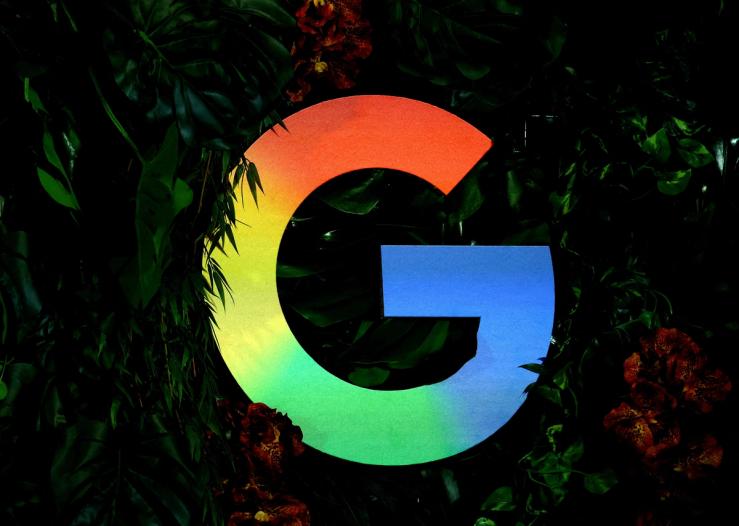The News
Google is making the latest bid at meeting rising consumer expectations for the capacity of a new AI model with the third version of Gemini released Tuesday.
Gemini 3 represents a significant boost in performance, beating OpenAI’s top models in several key industry benchmarks, as AI companies regularly leapfrog each other in performance. And it hints at what may become Google’s edge in the race between frontier models: its natively multimodal design.
Consumer expectations have been high, with some people speculating on the model’s performance or claiming to have been blown away by previews of its capability. The chatter prompted Andrej Karpathy, a former OpenAI researcher who once led AI for Tesla, to joke “I heard Gemini 3 answers questions before you ask them. And that it can talk to your cat.”
Excitement about a new model release can be positive, but it can also lead to a letdown if consumers expect too much. Some users believed OpenAI’s GPT-5, released in August, would be a major breakthrough and were disappointed when the improvement turned out to be incremental.
The nature of large foundation models like Gemini is that it’s difficult to predict what new capabilities will emerge with a massive new training run, or what attributes might change, irking passionate users who have grown accustomed to them.
“We invest in a lot of testing, both internally and externally,” said Koray Kavukcuoglu, Google’s chief AI architect and CTO of DeepMind, in an interview with Semafor. “But at the end of the day, there’s nothing that can replace hundreds of millions of users testing something in many different ways, and that creativity.”
Step Back
Putting products into the world at such a rapid pace is part of Google’s push to get back to its roots and rise to the challenge of a disruptive new technology wave — one that it helped usher in with AI breakthroughs over the past decade.
In April, DeepMind co-founder and CEO Demis Hassabis put Josh Woodward in charge of the Gemini app to help boost its feature set to appeal to a wider array of consumers. Woodward’s Google Labs, a division he still leads, had built Notebook LM, an experiment that became one of the company’s most popular AI apps.
Google said Tuesday that the app now has 650 million monthly users, putting it closer but still behind ChatGPT’s reported 800 million weekly active users.
Gemini 3 comes with a new batch of products including a developer tool that removes the need for writing code, an agent that can sort your emails, and a vibe coding tool for turning simple prompts into elaborate, interactive graphics.
“That’s all coming from how close we are working together and how synchronized we are that by the time the model development is done, we are actually ready to release something together,” Kavukcuoglu said.
“I’ve been describing the new role as fast and full on,” Woodward said. “There’s a lot of brainstorming, a lot of thinking about where we want to go, what we’re seeing from feedback, but also what are just new model capabilities we can build features around.”
Know More
When Google was racing to build what would eventually become Gemini following the surprising success of ChatGPT, it chose to build it as a “natively multimodal” foundation model, incorporating not just text but images, videos, and other multimedia in the training data.
In the long run, DeepMind hopes the approach will lead toward advanced general intelligence and robotics, but it has also borne fruit in the short term, putting the company ahead in areas like image and video creation.
In the latest update, Woodward said the multimodality has shown signs of a kind of cross-pollination, where two modalities improve the capabilities of one another. An example in Gemini 3 is “multimodal vibe coding,” where users can visually instruct the model to make changes in coding. Google product managers, he said, can take screenshots of an application, upload it to the model, and code up new features and bug fixes to show the development team on the spot.
While that was possible in Gemini 2.5, it’s gotten better in the latest version as a result of the two modalities improving in tandem. “They’re not only better individually, but they’re better together,” Woodward said.
Another example is Generative Interfaces, a new feature Google unveiled Tuesday. A user might ask for a visual aid to help learn about a complex subject, like cellular biology. Rather than spit out text or still images, Gemini 3 is capable of coding an app in the background and then presenting it as an interactive experience with animations. “You can imagine that permeating a lot of different tools over time,” Woodward said.
Reed’s view
Gemini 3 is an impressive model, judging by the benchmarks, but that’s not surprising. The DeepMind team, combined with Google’s infrastructure, will keep Google at the forefront, if not in the lead, in raw capability. But most of Google’s billions of users probably aren’t aware the benchmarks exist. They notice the products.
Google’s biggest challenge — the one it’s been tackling now for a few years — is turning AI capability into products as transformative and essential as YouTube, Google Maps, Gmail, and, of course, search itself.
The Gemini 3 launch seems to show the breadth of possibilities. The product announcements span enterprise and consumer, productivity and entertainment. It’s a reminder that Google is gargantuan. That is one of its weaknesses. Size moves slowly. But if the company can execute on AI product development across its vast empire, size can also be an advantage.
Generative interfaces, for instance, may be what “search” looks like in the future. While OpenAI and Perplexity have changed search from a bunch of blue links to a coherent answer, that probably isn’t where this ends. Most people are visual learners, so it makes sense they would prefer an interactive, visual app instead of a paragraph of text.
Right now, there isn’t enough compute power to offer this kind of response for free to billions of users. But that part is what Google is really good at — finding ways to build infrastructure as efficiently as possible — or in space, if needed.
Google has a daunting challenge ahead, one that requires a lot of building in every corner of the empire. You can tell that the employees who have remained at the company are having a little bit more fun, even if they’re working more hours.
With each product launch, you catch a glimpse of the progress.
Room for Disagreement
Reuters reported recently that DeepMind’s Hassabis has been focused on the company’s scientific endeavors at the expense of its business.
Some investors question why Alphabet hasn’t emerged as the undisputed AI leader given its inherent strengths. “It’s the classic team with all the talent that doesn’t win the national championship,” said Gene Munster, managing partner at Deepwater Asset Management. The Minneapolis investment firm this year sold around $14 million of Alphabet stock, concerned about its prospects, despite recent strides, in the fast-changing AI marketplace, Munster said.
Notable
Google has quite a bit of catching up to do with other AI companies, especially OpenAI, but the search giant’s bets on cloud, chips, and research may be starting to pay off, Business Insider argues. “If Gemini 3 is a smash hit, Google just has to not fumble it. No pressure,” tech correspondent Hugh Langley writes.


